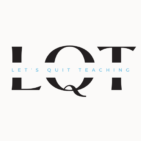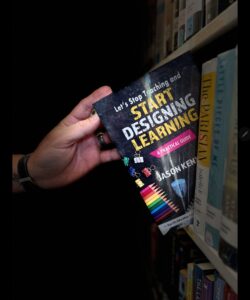There’s a mindset in education that’s easy to slip into and even easier to stay stuck in. It’s the belief that there’s one right way to teach. That if we just commit fully to one method, whether that’s direct instruction, inquiry-based learning, content-first, or thinking-skills-driven, we’ll land on the “best” approach for every learner. But the reality is more complex than that.
When we start thinking there’s only one way to do this work, we limit ourselves. We limit our learners. We miss the chance to be responsive, creative, and intentional. And instead of designing learning for them, we start designing based on our own preferences or our chosen camp. This isn’t about criticizing any particular method. Every approach has its strengths. The issue arises when we stop asking questions. When we stop adapting. When we stop designing.
So what if we reframed the conversation? What if instead of asking, “Which method is best?” we asked, “What do my learners need today, based on who they are, what they need to learn, and how learning actually works?” That’s where this framework comes in:
WHO × WHAT × HOW = Learning Design
It’s a multiplication equation. And in multiplication, a zero in any part makes the whole thing fall apart. Strong methods and clear goals won’t make up for a disconnect with your learners. Deep knowledge of your learners won’t matter much if the content isn’t clear. Each part matters. All of it counts.
The Problem With “One Way” Thinking
Education is full of false choices. Are you a direct instruction person or an inquiry person? Do you believe in content knowledge or critical thinking? These debates get loud. But they often miss the point. Because teaching isn’t about choosing sides. It’s about choosing learners.
Direct instruction has an effect size of 0.60. It’s powerful for teaching foundational knowledge and reducing overload for novice learners. Inquiry-based learning? That sits at 0.46. Still strong. Still useful. Especially when the goal is curiosity, ownership, or creative application. These aren’t opposing forces. They’re different tools. And we need both.
Same with content and thinking skills. Knowledge gives learners the material to reason with. Thinking strategies give them the power to use it. One doesn’t replace the other. We need both. When we latch onto a single method and hold it up as “the way,” we start designing around the method instead of the learner. We push all learners through the same filter, whether it fits or not.
Some learners need more structure. Some need space to explore. Some need to talk it out. Others need time to process in silence. A one-size-fits-all approach, no matter how well-intended, just doesn’t hold up. And when we stop adjusting, when we stop innovating, we lose the opportunity to meet learners where they are.
A Framework That Works
Want to move past the “one way” trap? Want to build something better? Start with this:
WHO × WHAT × HOW = Learning Design
This isn’t a list. It’s not a set of steps. It’s a formula. A mindset. A filter for every lesson plan, every unit, every instructional decision. Let’s break it down:
WHO: Know Who’s in the Room
Learners are not all the same. Not even close. They walk into our rooms carrying different strengths, different needs, different experiences. Knowing who’s in front of us isn’t optional. It’s essential.
Cognitive research is clear: prior knowledge is one of the biggest factors in how new learning sticks (Kirschner et al., 2006). And self-concept, the belief learners have in their own ability, has an effect size of 0.43, which is above the average for learning gains (Hattie, 2023). When we ignore who learners are, what they care about, and what they need, we’re designing in the dark. This isn’t about customizing every moment to every learner. It’s about making decisions that reflect the room we’re actually in, not the one we imagined when we planned.
WHAT: Teach What Matters (a.k.a. the Standards)
The standards exist for a reason. They are not the enemy. They’re the anchor. Too often, we chase engagement without a clear purpose. We create fun experiences that don’t point to anything. And when learners don’t know what they’re supposed to be learning or why it matters, we lose the learning entirely.
Teacher clarity, which includes setting clear goals and communicating learning intentions, has an effect size of 0.76 (Hattie, 2023). That’s huge. That’s too big to ignore. If learners don’t know what they’re learning or how they’ll know they’ve learned it, we haven’t done our job yet. Standards help us aim. Clarity helps us hit the target.
HOW: Use What Works in the Brain
The how is where evidence meets execution. This is where cognitive science helps us move from good intentions to real results. Practice testing boosts recall. Effect size? 0.59. Spaced practice helps learners remember over time. That’s a 0.60. Interleaving? That mix-it-up strategy that helps learners apply knowledge flexibly? That clocks in at 0.71. And feedback, done right, sits at 0.66 (Hattie, 2023).
The research is right there in front of us. So why keep defaulting to strategies that don’t deliver? Why keep teaching the way we were taught if it’s not the way learners learn best? If we want to see deep learning, lasting learning, transferable learning, we have to use methods that support the way the brain actually works.
The Multiplication Effect
WHO × WHAT × HOW. It’s not optional. It’s not random. And it’s not additive. You can’t pile up strengths in one area and expect them to cover a weakness in another. A zero in any factor means the learning doesn’t land. Know your learners. Aim at the right goals. Teach with methods that work. Miss one, and you miss it all.
This isn’t about finding the right side of the latest education debate. It’s about stepping outside the argument altogether and focusing on what matters: learners. We don’t need more sides. We need better bridges. Let’s stop choosing methods first and learners second. Let’s design for the learners we have, not the ones we wish we had. Let’s lead with clarity, strategy, and purpose. Because learning is the job. And it’s never just one way.



“Yesss to teaching life skills! Things like budgeting, communication, and problem-solving should be a bigger part of the curriculum.”